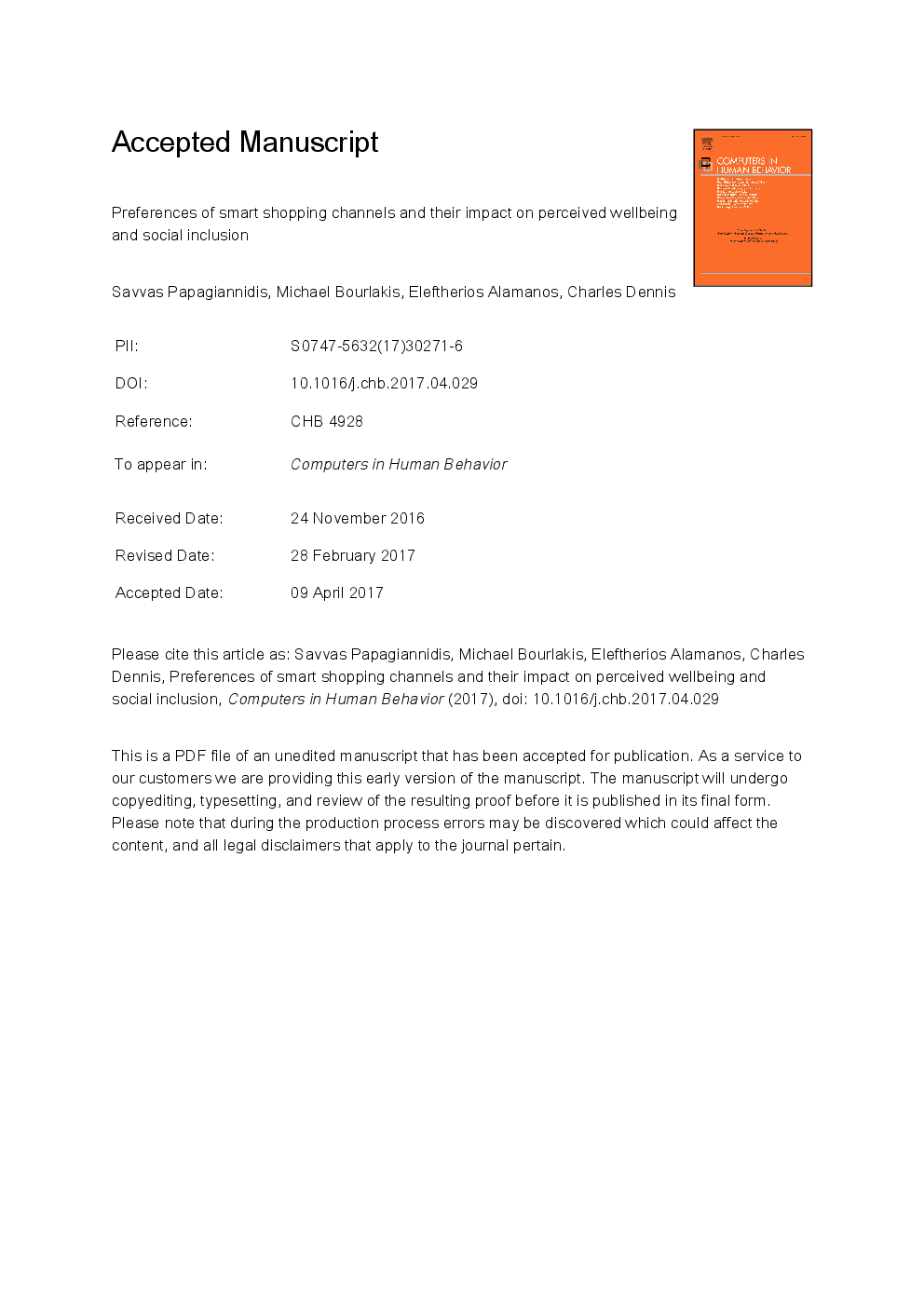ترجمه فارسی عنوان مقاله
تنظیمات کانال های خرید هوشمند و تأثیر آنها بر سلامت درک شده و پذیرش اجتماعی
عنوان انگلیسی
Preferences of smart shopping channels and their impact on perceived wellbeing and social inclusion
| کد مقاله | سال انتشار | تعداد صفحات مقاله انگلیسی |
|---|---|---|
| 115969 | 2017 | 30 صفحه PDF |
منبع

Publisher : Elsevier - Science Direct (الزویر - ساینس دایرکت)
Journal : Computers in Human Behavior, Volume 77, December 2017, Pages 396-405
ترجمه کلمات کلیدی
خرید چند کاناله، کانال های خرید هوشمند خرید آنلاین، تجارت اجتماعی، محرومیت اجتماعی، تندرستی،
کلمات کلیدی انگلیسی
Multi-channel shopping; Smart shopping channels; Online shopping; Social commerce; Social exclusion; Wellbeing;

